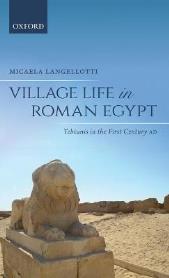| Main » Ad Board » ДРЕВЕН ЕГИПЕТ И АФРИКА » Бит и ежедневие |
Micaela Langellotti - Village Life in Roman Egypt: Tebtunis in the First Century AD
| 26.04.2022, 16:21 | |
Тебтунис е процъфтяващ град в оазиса Фаюм през епохата на римското владичество. Освен археологически находки, осветляващи местната земеделска икономика, изследователите са открили тук един от най-големите и добре запазени архиви от делови папируси. Те разкриват основните характеристики на икономическите транзакции през онази епоха, като от особено значение са тези на жреците от местния храм, пожелали да прехвърлят част от имотите на светилището в държавния поземлен фонд срещу придобиване на наследимо частно право на ползване на част от тези парцели. - на английски език, от MEGA, формат PDF.Сваляне с ляв бутон (downloading by left button) и после през бутона Download.АЛТЕРНАТИВЕН ЛИНК / ALTERNATIVE LINK: - на английски език, от Google Drive, формат PDF. Сваляне с ляв бутон (downloading by left button) от страницата на предоставящия сървър, после през бутона стрелка надолу/after by down arrow button.
| |
| Views: 497 | Placed till: 26.05.2022 | Rating: 0.0/0 | |

